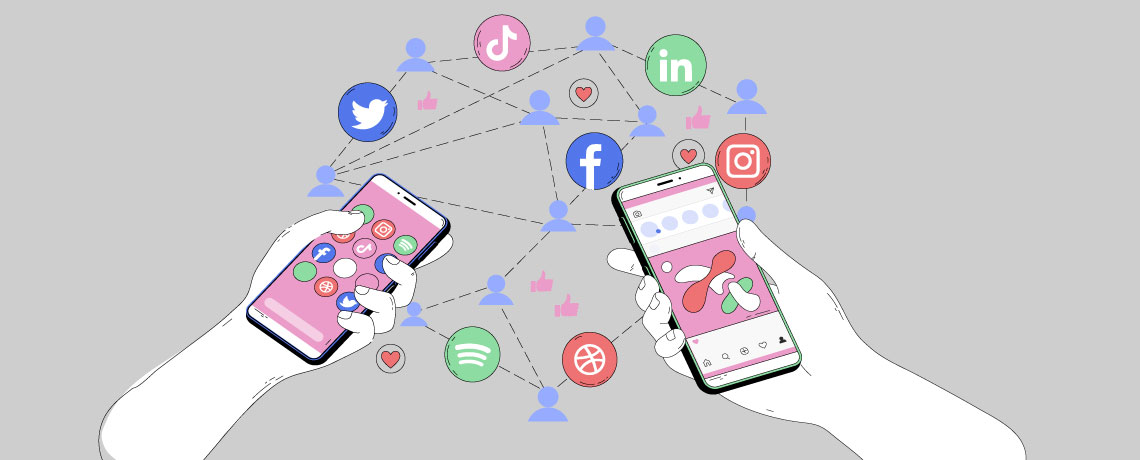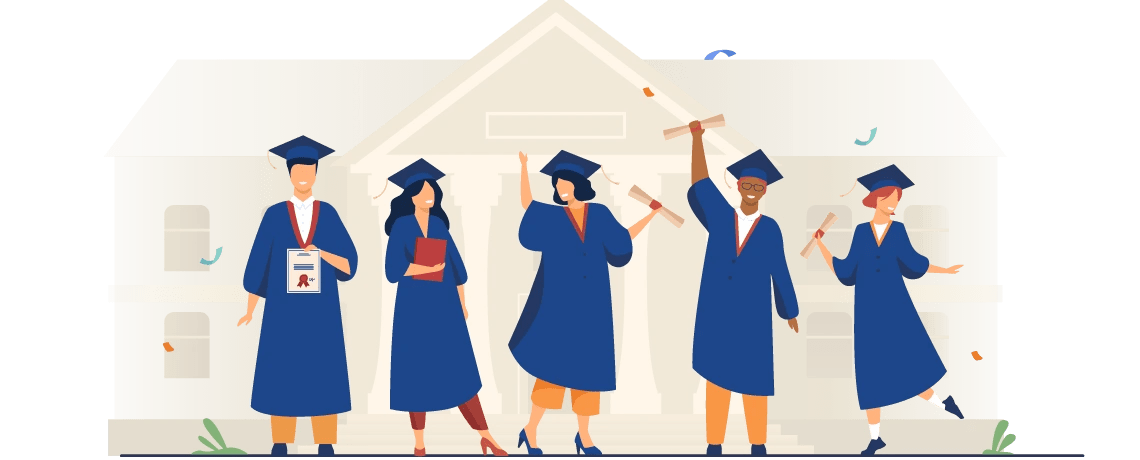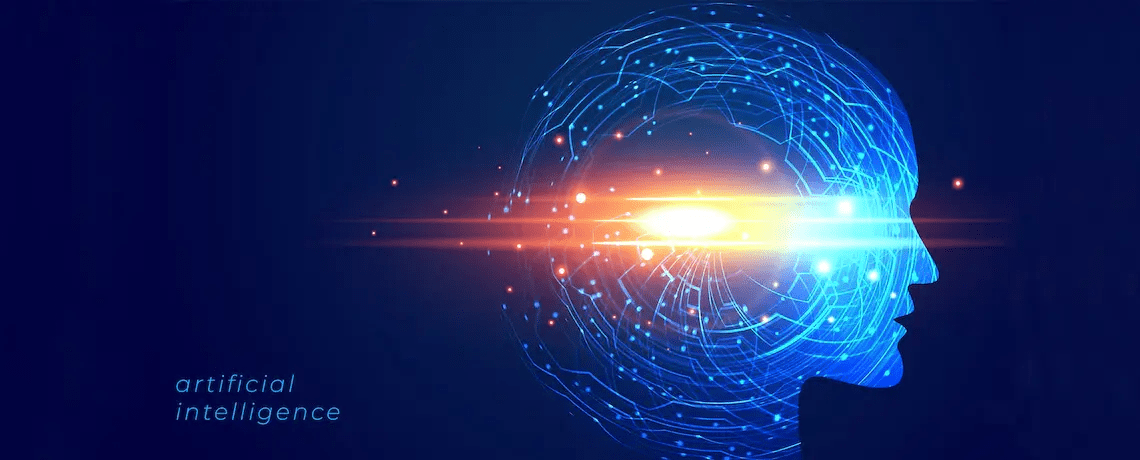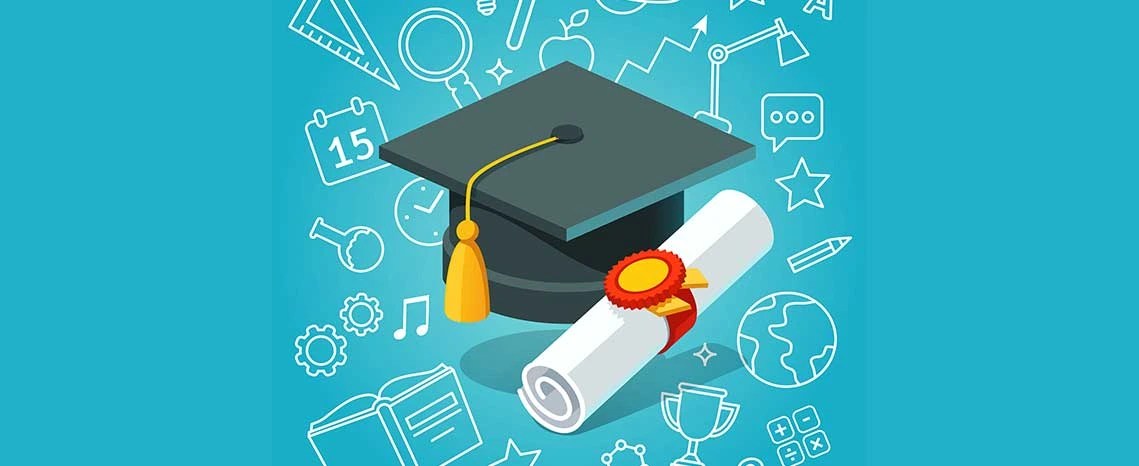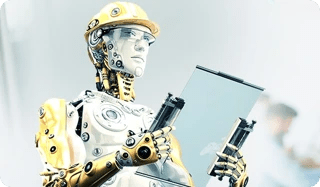Key Factors Shaping the Future of Digital Media and Technology

In traditional journalism, control was held by the newsroom. Now, it’s shared with algorithms, platforms and often, general people on the internet. The editor’s desk is no longer the final gate. Stories rise through shares, not just headlines. Narrative spreads from reels, trends and community posts, sometimes faster than verified news.
For mass communication students, this shift isn’t cosmetic. It redefines how stories are built, how trust is earned and who shapes public perception.
Now, media flows through platforms, shaped by machine learning, user preferences and real-time engagement. Storytelling has become participatory. Influence travels faster through the reels than press conferences.
For journalism students, understanding these shifts towards the digital world is critical.
The future of digital media and technology is not just about formats or tools. It’s about who controls meaning, who builds trust and how narratives are set when everyone becomes a communicator.
These are the key factors changing the very core of the media’s role in society.
Artificial Intelligence and Automation Are Reshaping the Media Profession
AI isn’t replacing journalists. It’s reshaping what journalists need to know and how they work. Across major newsrooms, AI tools are already:
- Writing first drafts of stories
- Flagging breaking stories through social listening tools
- Tagging metadata for faster video and photo retrieval
- Generating subtitles and real-time translations for multilingual reporting
- Personalising news recommendations for individual users
- Detecting plagiarism and misinformation through automated verification tools
- Assisting in transcribing long interviews within minutes
- Powering audience analytics dashboards to track content performance and optimise headlines
- Filtering leads and trends from massive open-source intelligence (OSINT) streams
- Streamlining media workflows
- Automating mundane tasks: An application such as Reuters’ News Tracer can track down breaking news, so that journalists are not tied down to grunt work.
- Crunching more data: Research can be performed much faster, as shown by The New York Times R&D Lab’s Editor application.
- Digging out media insights: Information can be correlated quickly and efficiently, such as The Washington Post’s Knowledge Map
- Fact-checking is speedy and reliable: Facebook is using AI to detect word patterns that may indicate a fake news story
- Machines can put together reports and stories from raw data
For journalism students, this shift means learning how to use AI as a collaborator, not a crutch. That includes:
- Understanding the limits of AI-generated content
- Knowing when editorial judgement must override automation
- Identifying bias in data models and recommendation engines
- Being able to edit and verify machine-generated text
- Developing content strategies that work with algorithmic feeds, not against them
AI is now part of the newsroom infrastructure.
Those who can guide it, not just use it, will be the ones setting the editorial direction in tomorrow’s media organisations.
How Renowned Media Houses Are Embracing the Digital Change
Major newsrooms are not just experimenting with AI, they’re integrating it into daily operations.
In 2016, Reuters partnered with semantic tech company Graphiq to offer publishers free interactive data visualisations across topics like news, sports and entertainment.
At the BBC, the challenge of making sense of its vast content archive led to the development of Juicer, a tool that extracts and connects information for quicker editorial access.
In 2015, The New York Times launched its experimental project Editor, designed to streamline journalistic tasks.
The Washington Post debuted its AI bot Heliograf at the Rio Olympics in 2016, generating live event stories from raw data feeds.
The Associated Press started using AI back in 2013 to automatically generate sports and earnings reports from structured databases.
In 2016, Quartz received a £193,000 grant from the Knight Foundation to establish its Bot Studio, building custom tools to support journalists.
In 2016, The Guardian introduced its Facebook chatbot, allowing readers to receive personalised news briefings based on location and preferred timing.
These examples are enough to prove that top media houses are welcoming these changes from the traditional form of working to the digital one.
The Algorithmic Revolution: How Personalisation Is Redefining Influence
On platforms like Instagram, YouTube and TikTok, personalised feeds dictate what one sees, likes, shares and believes.
The role of an editor? It’s often played by machine learning models. This shift changes everything:
- Editorial control moves to platforms
- Echo chambers deepen as similar content keeps looping
- Influencers rise as news sources (sometimes with no journalistic training)
What does this mean for students? It means learning how to work with platform rules, not around them. Understanding algorithms becomes as important as understanding headlines.
Key concepts to grasp:
- Filter bubbles: How platforms isolate opinions
- Engagement bias: The more clicks, the more visibility, regardless of truth
- Hashtag dynamics: The silent currency of digital reach
Learning communication now includes decoding how tech controls what gets seen.
Immersive and Interactive Media Formats Are Rewriting Storytelling Norms
News is no longer just words on a screen or a voice on a mic. It’s now felt, seen and experienced. Digital media today uses tools like:
- Augmented Reality (AR)
- Virtual Reality (VR)
- 360-degree videos
- Interactive infographics
- Data storytelling
Today’s audience wants:
- Quick interaction
- Visual clarity
- Multisensory experience
For students, this means building skills in:
- Basic design
- Data visualisation tools
- Scriptwriting for reels and interactive pieces
- Audio storytelling for podcasts and voice-first platforms
In a world where attention spans are measured in seconds, one doesn’t just tell stories. One designs them to be touched, swiped, scrolled and remembered.
| Skill | Use Case Example |
|---|---|
| AI Content Editing | Auto-editing short videos |
| Data Visualisation | Presenting complex news visually |
| Mobile-First Storytelling | Crafting for social apps |
| Platform Analytics | Understanding audience behaviour |
| Audio Production | Creating podcasts or voice updates |
Participatory Culture and the Rise of Audience-Driven Content Creation
What happens when the audience starts creating the headlines?
That’s where the media is heading. Viewers aren’t just watching anymore. They’re producing. Posting. Leading conversations. In mass communication today, the audience is not passive. It’s powerful.
User-generated content (UGC) now competes with traditional journalism. The rise of platforms like Reddit, X (formerly known as Twitter) and Clubhouse proves this. Influencers are shaping public opinion faster than newsrooms can respond. One tweet or reel now holds more reach than a press release.
Content isn’t king anymore. Community is. That means students need to understand:
- What drives people to share?
- How do online communities form trust?
- What role does a communicator play in these spaces?
This shift needs three core skills:
- Listening more than talking
- Knowing platform etiquette
- Creating for engagement, not just information
When content is a two-way street, students must learn to both lead and follow.
Media Monetisation Models Are Rapidly Evolving in the Creator Economy
Who pays for news when everyone expects it for free?
This is one of the toughest problems in modern media. The answer isn’t one-size-fits-all. It’s shifting every year. Sometimes every month.
Here’s what’s replacing old models:
| Monetisation Model | Platform Examples | How It Works |
|---|---|---|
| Subscription | Inkl, The Ken | Paid-only articles, ad-free reading |
| Creator Support | Patreon, BuyMeACoffee | Readers fund creators directly |
| Affiliate + Influencer | Instagram, YouTube | Revenue through product links or brand deals |
| Branded Content | Quint, ScoopWhoop | Stories made in collaboration with advertisers |
The media economy is now shaped by micro-entrepreneurs, not just media houses. That means job roles are shifting, too.
One can now work as:
- Audience strategist
- Growth manager
- Community manager
- Content analyst
Mass communication is no longer limited to reporting. It touches sales, tech and product strategy. Learning to write for clicks is not enough. One must also know how to:
- Build subscriber funnels
- Optimise newsletters
- Track platform-based performance
Those who can do this are in high demand. And those who can’t, struggle to find footing.
Ethics, Trust and Media Literacy in a Technologically Complex Landscape
When fake news spreads faster than facts, trust becomes currency. AI has made it easy to create deepfakes. Bots push narratives. Fake profiles run trending hashtags.
In such a world, media ethics becomes not just a class, but a career tool.
Key concerns students must face:
- How to detect manipulated content?
- What counts as ethical AI use in journalism?
- How does bias show up in algorithm-fed news feeds?
Ethical reporting today involves:
- Knowing when not to publish
- Clarifying sources and sponsorships
- Declaring AI use in content production
It’s not only about being right. It’s about being transparent. Future media professionals must know:
- The tools to verify content
- The limits of automation
- The responsibility of influence
And that’s what makes them credible.
Where Traditional Media Skills Meet Digital-First Thinking: School of Digital Media and Communication @Mahindra University
Media education today demands more than just software skills or headline practice. It calls for a deep understanding of editorial ethics, audience shifts, platform mechanics and the evolving role of content in society. This is exactly the foundation the School of Digital Media and Communication at Mahindra University has built, a school where the rigour of traditional journalism meets the strategic demands of digital-first storytelling.
At the School of Digital Media and Communication , you won’t just learn to write a lead. With four specialised programmes ranging from undergraduate to doctoral levels, it caters for the demand of the changing landscape of mass communication:
With four specialised programmes ranging from undergraduate to doctoral levels
- 3-year Bachelor of Journalism and Mass Communication (BJMC)
- 4-year Bachelor of Technology in Computation and Media (BTCM)
- MA in Journalism and Mass Communication
- Doctorate of Philosophy (Ph.D.) in Media and Communication
Whether it’s narrative design, mobile journalism, digital public relations, or platform strategy, each course connects media theory with the way the real media world works.
Conclusion
The future of digital media and technology is shaped by those who understand it, not just as consumers but as creators, critics and strategists. From AI-driven storytelling to immersive formats and personalised content feeds, the media space now demands sharper skills, ethical clarity and platform fluency.
Career paths are no longer linear; roles now blend content, analytics, design and community-building. For mass communication students, this shift is a call to think beyond traditional journalism. Success lies in combining curiosity with adaptability and learning how to lead in a space where change is constant.
If one is aiming to build a future in digital journalism, storytelling, public relations, content creation, or immersive media, Mahindra University offers an education that’s grounded, global and geared for tomorrow’s media ecosystem. Admissions are open, apply now!
FAQ
- What are the most critical technologies transforming digital media today?
AI editing tools, real-time analytics platforms and interactive storytelling formats like AR and 360-video.
- Is content creation still a sustainable career in the AI era?
Yes, if one learns to integrate human creativity with machine support and knows how to monetise value.
- How do platforms control what people see and believe?< Through recommendation algorithms that use engagement data to decide visibility, often creating echo chambers./li>
- What skills will define successful media professionals by 2035?
Tech fluency, audience strategy, ethical thinking, mobile storytelling and data visualisation.
- How does one stay ethical and authentic in the algorithm age?
By verifying sources, declaring AI use, resisting clickbait and being transparent with audiences.




























































































































































































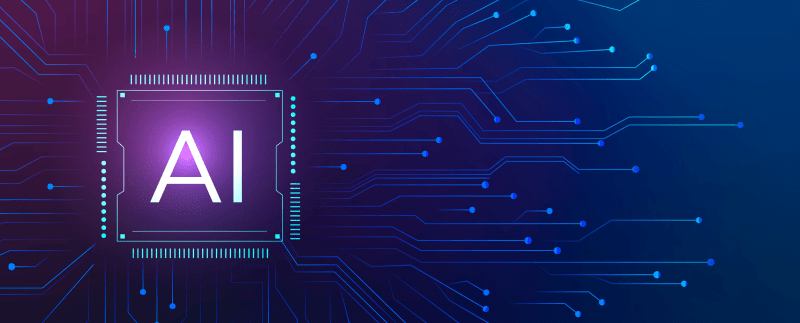



















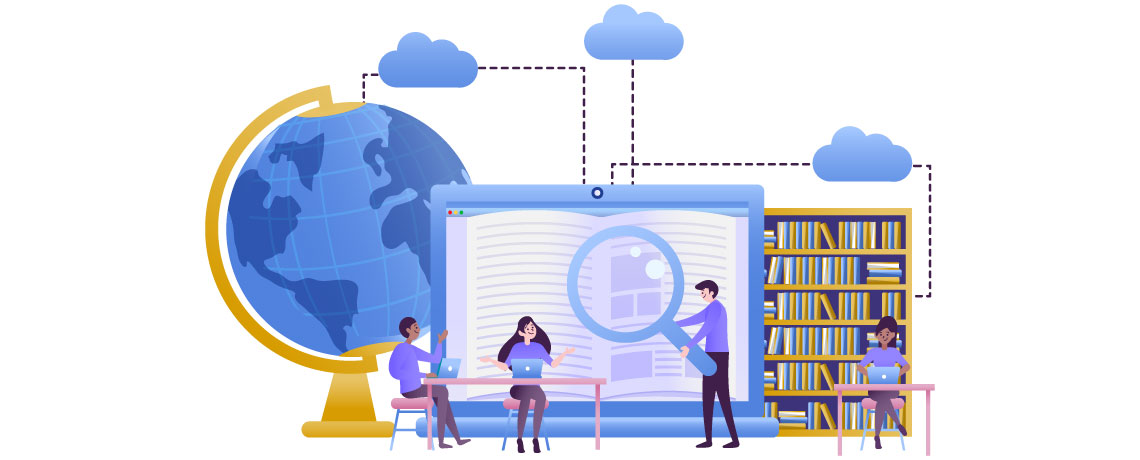





![Arm_Yourself_with_Deep_Business_Knowledge_&_Insights_with_PhD_Program_in_Business_Administration_at_Mahindra_University[1] Arm_Yourself_with_Deep_Business_Knowledge_&_Insights_with_PhD_Program_in_Business_Administration_at_Mahindra_University[1]](https://i0.wp.com/www.mahindrauniversity.edu.in/wp-content/uploads/2023/04/Arm_Yourself_with_Deep_Business_Knowledge__Insights_with_PhD_Program_in_Business_Administration_at_Mahindra_University1.jpg?resize=1140%2C460&ssl=1)
![Emerge_as_a_Forward_thinking_Mechanical_Engineer_with_B_1140x460[1] Emerge_as_a_Forward_thinking_Mechanical_Engineer_with_B_1140x460[1]](https://i0.wp.com/www.mahindrauniversity.edu.in/wp-content/uploads/2023/04/Emerge_as_a_Forward_thinking_Mechanical_Engineer_with_B_1140x4601.jpg?resize=1140%2C460&ssl=1)
![B.Tech_in_Computer_Science_Engineering_(BTech_CSE)_Your_Gateway_to_Become_a_Computer_Genius_1140x460[1] B.Tech_in_Computer_Science_Engineering_(BTech_CSE)_Your_Gateway_to_Become_a_Computer_Genius_1140x460[1]](https://i0.wp.com/www.mahindrauniversity.edu.in/wp-content/uploads/2023/04/B.Tech_in_Computer_Science_Engineering_BTech_CSE_Your_Gateway_to_Become_a_Computer_Genius_1140x4601.jpg?resize=1140%2C460&ssl=1)
![Digital_Marketing_is_Booming_Globally_1140x460[1] Digital_Marketing_is_Booming_Globally_1140x460[1]](https://i0.wp.com/www.mahindrauniversity.edu.in/wp-content/uploads/2023/04/Digital_Marketing_is_Booming_Globally_1140x4601.jpg?resize=1140%2C460&ssl=1)
![MU_Electrical20Computer20Engineering_1140x460[1] MU_Electrical20Computer20Engineering_1140x460[1]](https://i0.wp.com/www.mahindrauniversity.edu.in/wp-content/uploads/2023/04/MU_Electrical20Computer20Engineering_1140x4601.jpg?resize=1140%2C460&ssl=1)
![BA_LLB_Hons_Course_at_Mahindra_University[1] BA_LLB_Hons_Course_at_Mahindra_University[1]](https://i0.wp.com/www.mahindrauniversity.edu.in/wp-content/uploads/2023/04/BA_LLB_Hons_Course_at_Mahindra_University1.webp?resize=1140%2C460&ssl=1)
![Management_&_Business_Administration_is_Tremendously_High[1] Management_&_Business_Administration_is_Tremendously_High[1]](https://i0.wp.com/www.mahindrauniversity.edu.in/wp-content/uploads/2023/04/Management__Business_Administration_is_Tremendously_High1.jpg?resize=1140%2C460&ssl=1)

![whyistraining&placementcellimportant[1] whyistraining&placementcellimportant[1]](https://i0.wp.com/www.mahindrauniversity.edu.in/wp-content/uploads/2023/04/why20is20training2020placement20cell20important1.png?resize=1140%2C460&ssl=1)
![TheDifferencesbetweenRights&Duties[1] TheDifferencesbetweenRights&Duties[1]](https://i0.wp.com/www.mahindrauniversity.edu.in/wp-content/uploads/2023/04/The20Differences20between20Rights2020Duties1.png?resize=1140%2C460&ssl=1)
![sleep_deprivation[1] sleep_deprivation[1]](https://i0.wp.com/www.mahindrauniversity.edu.in/wp-content/uploads/2023/04/sleep_deprivation1.jpg?resize=1140%2C460&ssl=1)
![SelfLoveBlogImage2[1] SelfLoveBlogImage2[1]](https://i0.wp.com/www.mahindrauniversity.edu.in/wp-content/uploads/2023/04/Self20Love20Blog20Image2021.png?resize=1140%2C460&ssl=1)
























